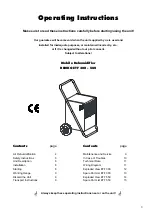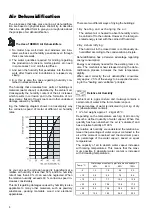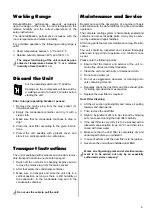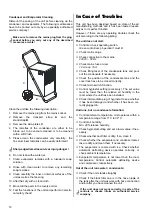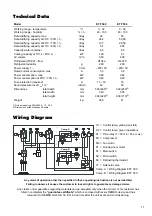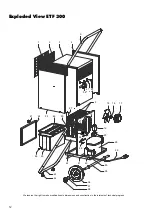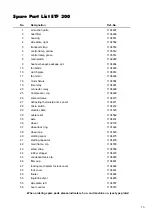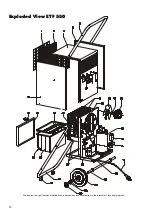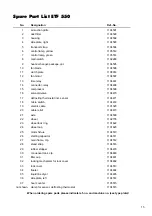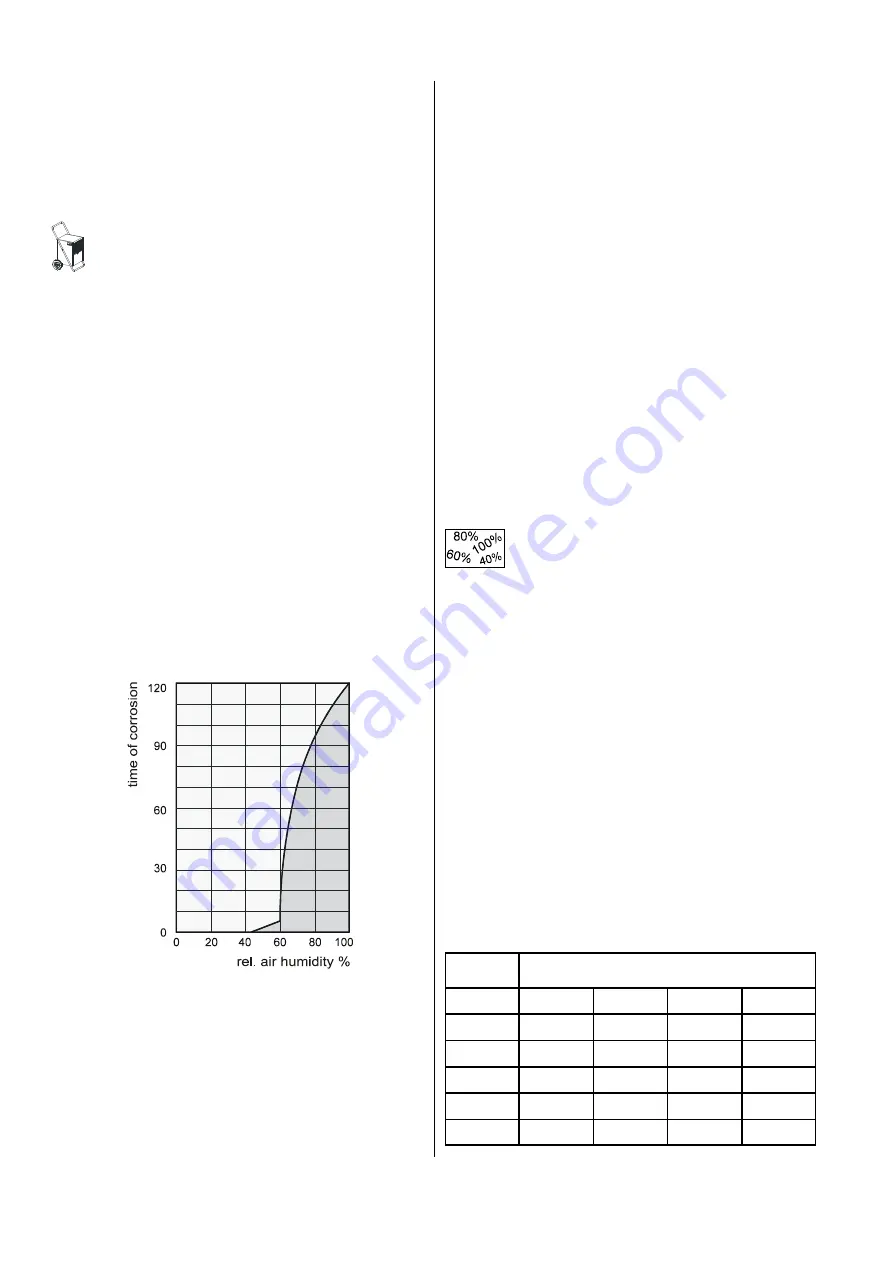
4
Air Dehumidification
The processes that take place during air dehumidifica-
tion are based on physical laws. We will try to describe
these in a simplified form to give you a rough idea about
the principle of air dehumidification.
There are two different ways of drying the buildings:
1. B y h e a t i n g a n d e x c h a n g i n g t h e a i r :
The ambient air is heated to absorb humidity and to
be carried off to the outside. However, the total gen-
erated energy is lost with the carried off humid air.
2. By dehumidifying:
The humid air in the closed room is continuously de-
humidified according to the condensation principle.
Dehumidification has a decisive advantage regarding
energy consumption:
Energy is exclusively needed for the existing room vol-
ume. The mechanical heat released during the dehu-
midification process increases the room temperature
slightly.
When used correctly the air dehumidifier consumes
only approx. 25 % of the energy to be supplied accord-
ing to the “heating and ventilation” principle.
As you can see the corrosion speed is insignificant at a
relative air humidity of less than 50 % and at a humidity
rate of less than 40 % it can even be neglected. When
the relative humidity exceeds 60 % corrosion speed in-
creases considerably.
This limit regarding damages caused by humidity is also
applicable to many other materials, such as powdery
substances, packing materials, wood, and electronic
apparatuses.
Relative Air Humidity
Ambient air is a gas mixture and it always contains a
certain rate of water in the form of water vapour.
This percentage of water is indicated in g per kg of dry
air (absolute water content).
1 m³ of air weighs approx. 1.2 kg at 20° C.
Depending on the temperature each kg of air can only
absorb a defined quantity of water vapour. When this
quantity has been absorbed, the air is “saturated” and
has a relative humidity of 100 %.
By relative air humidity we understand the relation be-
tween the percentage of water vapour contained in the
air at the moment concerned and the maximum possi-
ble percentage of the water vapour, based on equal
temperatures.
The capacity of air to absorb water vapour increases
with raising temperatures. This means that the maxi-
mum possible (= absolute) water content is increased
with increasing temperatures.
The Use of REMKO Air Dehumidifiers
◊
No matter how well doors and windows are insu-
lated, wetness and humidity penetrate even through
thick concrete walls.
◊
The water quantities required for binding regarding
the production of concrete, mortar, plaster, etc. need
in some cases 1 or 2 months to diffuse.
◊
And even the humidity that penetrates into the brick-
work after floods and inundations is released very
slowly.
◊
E.g. this is also the case regarding humidity con-
tained in stocked materials.
The humidity that emanates from parts of buildings or
materials (water vapour) is absorbed by the ambient air.
Consequently the humidity content of the air increases
which results in corrosion and in the formation of mil-
dew, decay, flaked off paint coats and other undesired
damage caused by humidity.
E.g. the following diagram shows in an exemplary way
the corrosion speed of metal at different air humidity
rates.
Temp. °C
Water vapour content in g/m³ at an air humidity of
40%
60%
80%
100%
-5
1,3
1,9
2,6
3,3
+10
3,8
5,6
7,5
9,4
+15
5,1
7,7
10,2
12,8
+20
6,9
10,4
13,8
17,3
+25
9,2
13,8
18,4
23,0
+30
12,9
18,2
24,3
30,3
Summary of Contents for ETF 300
Page 2: ......



